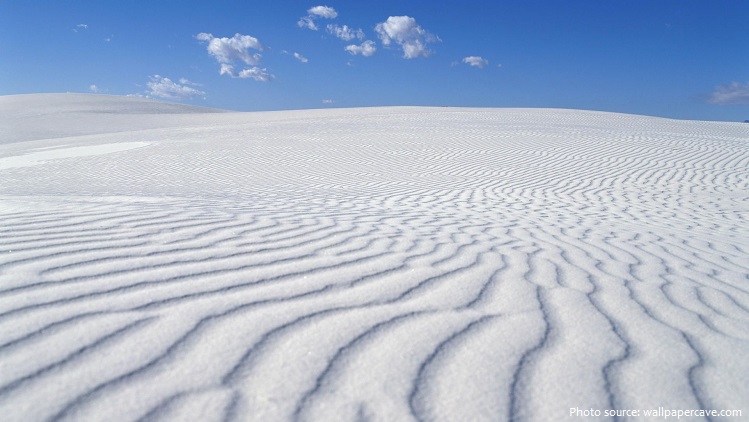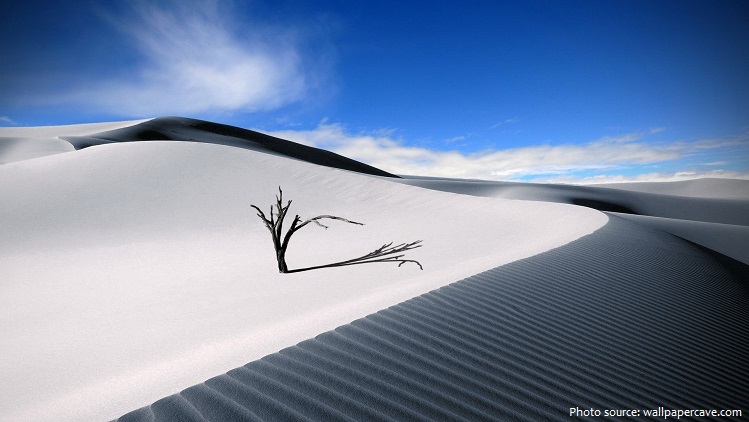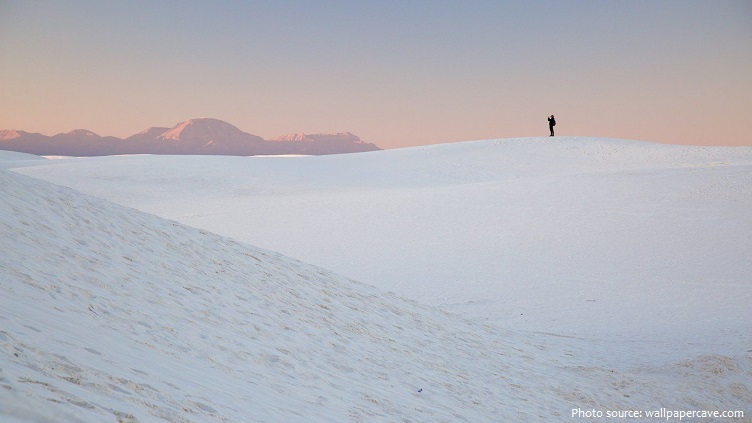White Sands National Monument is one of the most stunning landscapes in the state, located a half an hour’s drive southwest of Alamogordo in the south of New Mexico.
The monument is situated at an elevation of 1,291 meters (4,235 feet) above sea level in the mountain-ringed Tularosa Basin and comprises the southern part of a 710 square kilometers (275 square miles) field of white sand dunes composed of gypsum crystals. The gypsum dune field is the largest of its kind on Earth.
Even though gypsum is one of the most common minerals found on Earth, seldom is it seen or found on the Earth’s surface. That’s because gypsum dissolves easily in water.
Unlike other desert sands, it is cool to the touch, due to the high rate of evaporation of surface moisture and the fact that the sands reflect, rather than absorb, the sun’s rays.
Despite the current aridity of White Sands, which evolved over eons, it is biologically rich and diverse, with endemic species of animals, which afford exceptional opportunities for scientific research into evolution.
Surrounding the dunes are the San Andres and Sacramento Mountains, the source of the gypsum powdered sand. For many millennia, rains have eroded these mountains, washing the grains of gypsum into the valley and depositing them into Lake Lucero. In the extreme desert heat, the evaporating water of the seasonal lake leaves behind fine gypsum sand, resulting in the prevailing westerly winds blowing the gypsum particles into massive white sand dunes.
A fossil trackway of footprints of humans and ground sloths dating from the last ice age shows that ground sloths lived at White Sands, and were hunted by humans at least 11,700 years ago.
The first Euro-American exploration was led by a party of US Army officers in 1849. The Mescalero Apache were already living in the area at the time. Hispanic families started farming communities in the area at Tularosa in 1861 and at La Luz in 1863.
On January 18, 1933 President Herbert Hoover created the White Sands National Monument. Fortunately, this won out over a proposed game hunting preserve.
Trails through the dunes include the raised Interdune Boardwalk and the Dune Life Nature Trail, dotted with interpretive exhibits on wildlife and other features.
Over 300 plants, 250 birds, 50 mammals, 30 reptiles, 7 amphibians, and 1 fish species call White Sands National Monument their home.
The weather in White Sands National Monument is usually quite nice with clear, sunny skies for approximately 330 days out of the year. Summers are hot with daytime temperatures averaging 36ºC (97ºF) in the summer and 16ºC (60ºF) in the winter. Most of our rainfall occurs during “monsoon season” from early-July through mid-October.
More than 500,000 people visit White Sands National Monument each year.
The glistening white sands of New Mexico is one of the world’s great natural wonders.



